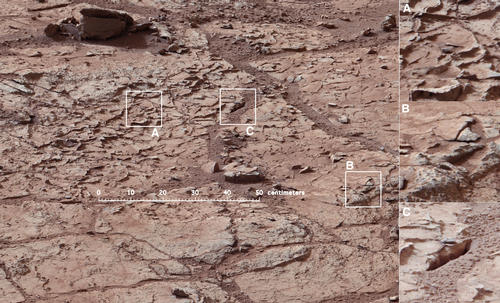By Tiffanie Reynolds | gargoyle@flagler.edu
Mars rover Curiosity will be drilling into what may be the first signs of water in the next two weeks.
During a news teleconference held Tuesday, Mars Science Laboratory project manager Richard Cook and the rest of the team announced their discovery of veins filled with hydrated calcium sulfate in the bedrock on Yellowknife Bay, a shallow depression toward the bottom of the Gale Crater, where Curiosity is currently located. The team takes the presence of hydrated calcium sulfate in the rock as a sign that there once was water in the area, because calcium sulfate is produced when water evaporates from the mineral as it is being heated.
Other signs include the different types of rocks found in the area. From sandstone to very fine silkstone, the number and variety of rocks tells the team that each type was made under different conditions. Even the grains in the rock have a rounded shape, which indicates that the rocks were once pushed by water, according to Dr. R. Alieen Yingst of the Mars Curiosity Rover team.
“You put that together with the vein fills that are made out of hydrated calcium sulfate, and basically these rocks were saturated with water. And it could be that there were several phases of this history of water,” says John Grotzinger, project scientist.
The area, named John Klein area in honor of the Mars Science Laboratory deputy project manager who passed away in 2011, was first seen from orbit. What made the team really notice the area is the increase in temperature, compared to terrain only a few feet away.
Currently just a few meters away from the John Klein area, Curiosity will start on some sample drills as it is also the first time the Mars rover will be drilling into the planet’s soil. The team will be using these test drills as a way to clean the drill of any Earth contaminators before sending back samples to analyze.
Curiosity will start drilling for samples in the next two days, and will have samples sent back to the Mars Science Laboratory team in the next few weeks.
Although these discoveries are a strong indication of water in the area, it is too early to tell what these signs of water indicate. The team hopes to find out about the conditions of the environment in studying these samples, in order to get a better picture of the area’s history.



Be the first to comment on "Curiosity finds first signs of Mars’ history"